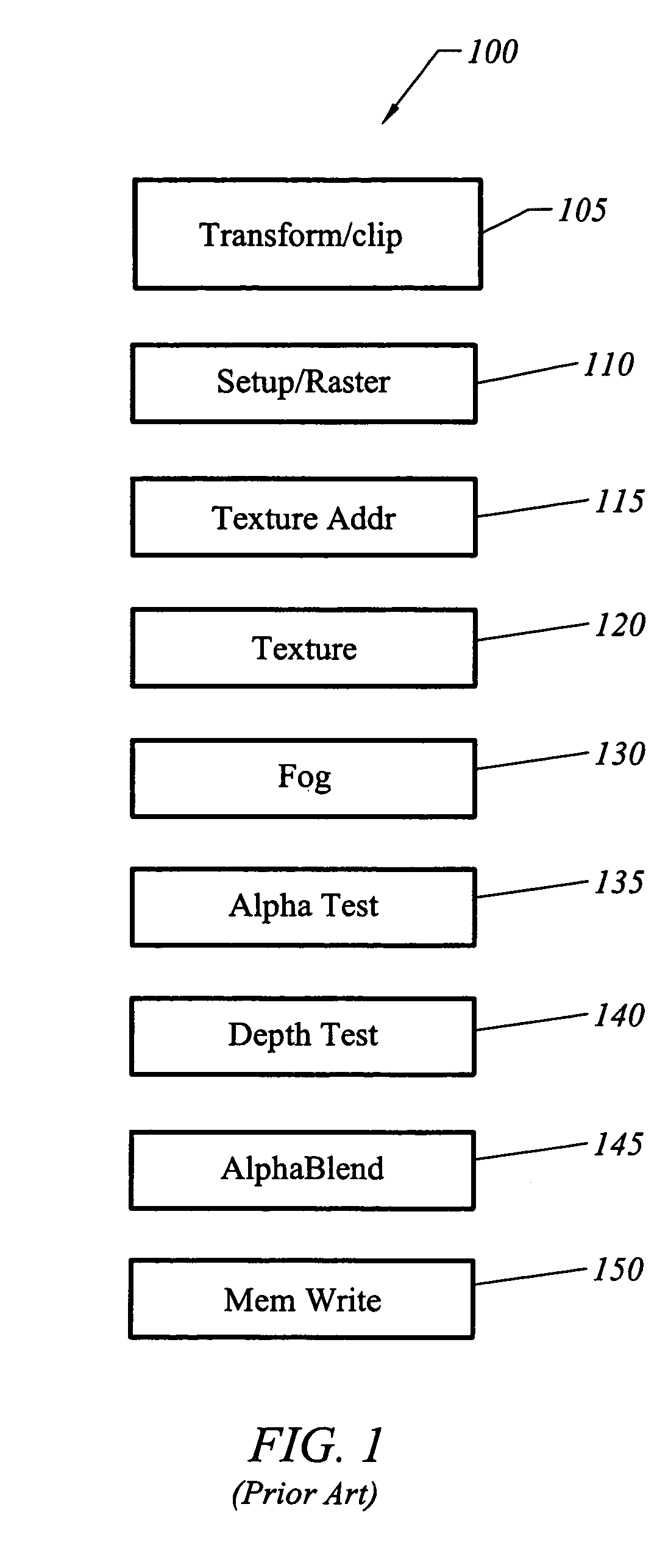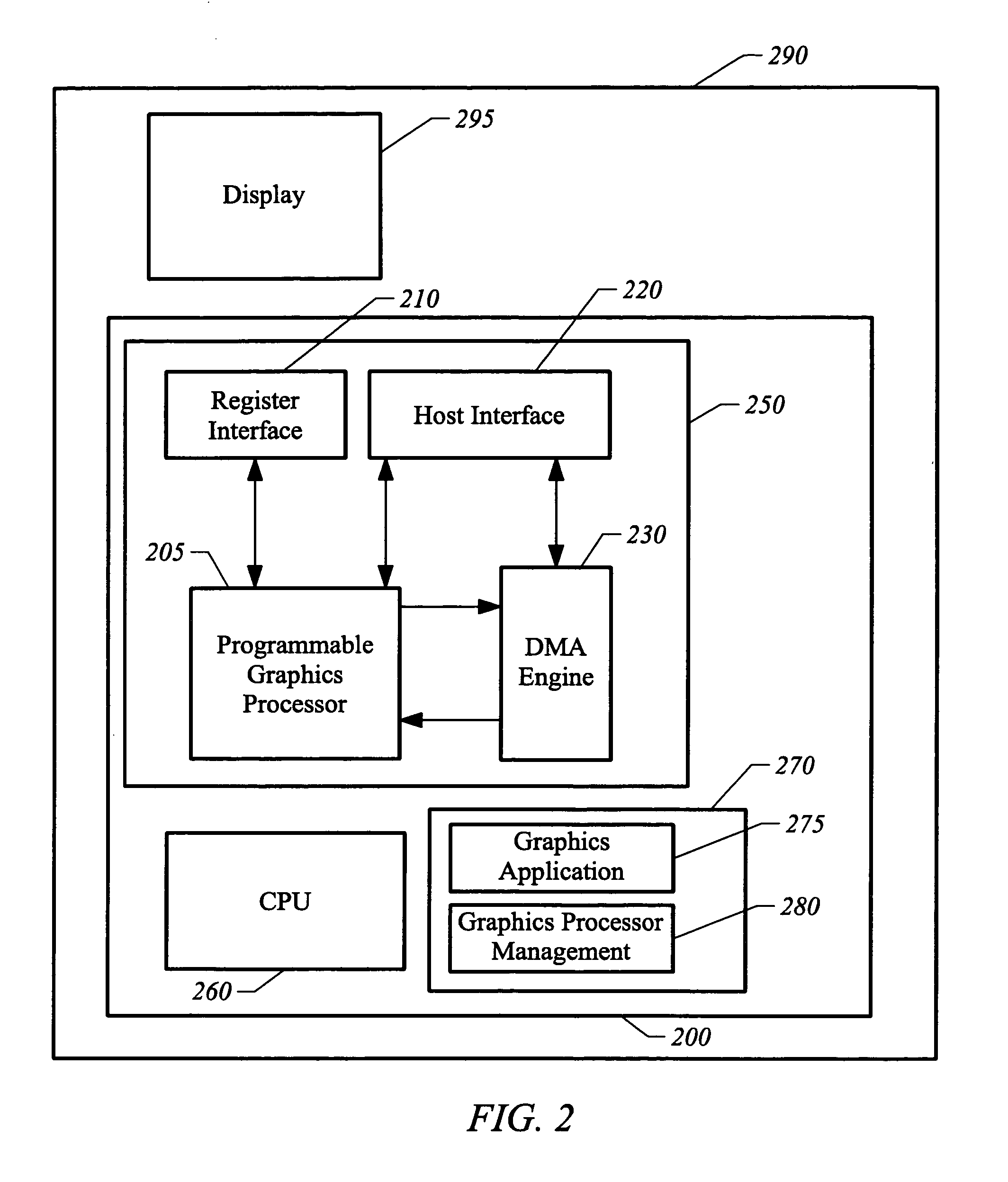Interleaving of pixels for low power programmable processor
a programmable processor and interleaving technology, applied in the field of low-power programmable processors, can solve the problems of large power consumption in deep pipelines, and large power consumption in many stages
- Summary
- Abstract
- Description
- Claims
- Application Information
AI Technical Summary
Benefits of technology
Problems solved by technology
Method used
Image
Examples
Embodiment Construction
[0023]FIG. 2 is a block diagram of one embodiment of the present invention. A programmable graphics processor 205 is coupled to a register interface 210, a host interface 220, and a memory interface, such as a direct memory access (DMA) engine 230 for memory read / write operations with a graphics memory (not shown), such as a frame buffer. Host interface 220 permits programmable graphics processor 205 to receive commands for generating graphical images from a host. For example, the host may send vertex data, commands and program instructions to programmable graphics processor 205. A memory interface, such as a DMA engine 230, permits read / write operations to be performed with a graphics memory (not shown). Register interface 210 provides an interface for interfacing with registers of programmable graphics processor 205.
[0024]Programmable graphics processor 205 may be implemented as part of a system 290 that includes at least one other central processing unit 260 executing a software ...
PUM
 Login to View More
Login to View More Abstract
Description
Claims
Application Information
 Login to View More
Login to View More - R&D
- Intellectual Property
- Life Sciences
- Materials
- Tech Scout
- Unparalleled Data Quality
- Higher Quality Content
- 60% Fewer Hallucinations
Browse by: Latest US Patents, China's latest patents, Technical Efficacy Thesaurus, Application Domain, Technology Topic, Popular Technical Reports.
© 2025 PatSnap. All rights reserved.Legal|Privacy policy|Modern Slavery Act Transparency Statement|Sitemap|About US| Contact US: help@patsnap.com



